The best electric road bikes are tailored to riding fast and covering plenty of ground while being tuned for fast descending, while still getting a helping hand from the motor on the uphills.
It wasn't so long ago that the world of electric bikes was dominated by electric hybrids and electric mountain bike models. Alongside electric gravel bikes, electric road bikes are increasingly popular and, in some cases, look very similar to non-motorised machines.
Some road ebikes will have carbon-fibre frames and lightweight wheelsets, bringing their weight down to under 12kg – not a lot more than some unpowered bikes.
As with any electric bike motor, an e-road bike’s electric assistance will be limited to speeds below 15mph/25kph as per electric bike laws in the UK, EU and Australia. The limit is 20mph in the US. That’s more than enough for climbing – you’ll be able to climb much quicker than on a regular road bike – but could limit an e-road bike’s appeal on flat roads if riding in a fast group, for example.
For more advice on what to look for in an electric road bike, our full buyer’s guide is at the bottom of this article.
Best electric road bikes in 2024
Orbea Gain M10i
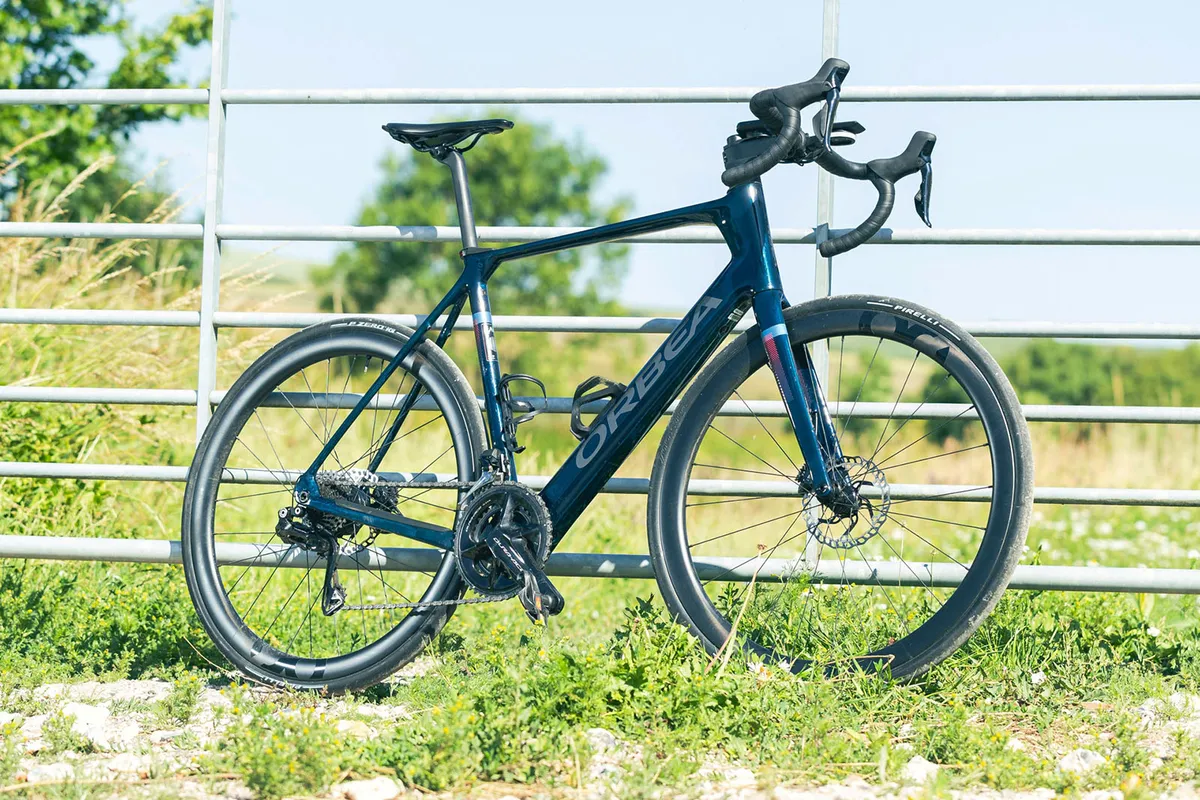
- £9,299/$9,999/€9,999/AU$17,999 as tested
- Pros: Clever system; low weight; great range
- Cons: Shimano Dura-Ace Di2 might be excessive
The Orbea Gain M10i is arguably one of the best e-road bikes to date.
Its s ride feel outclasses many other bikes due to how Orbea has tuned the Mahle X20 hub motor. The motor mirrors your input, never feeling like it's shoving you along.
The battery also provides an impressive range, racking up 62.25 miles (100.18km) with 3,795.8ft (1,157m) of ascent on our tester's first ride, with 45 per cent of the battery charge left.
Orbea has based the Gain's geometry on its Orca OMR road bike frames, tweaking it slightly for an endurance focus, and creating a balanced feel with quick handling in the process.
The superbike build and price – thanks in part to the Shimano Dura-Ace Di2 groupset – might be overkill for some, but there's no denying the Gain M10i sets a high bar.
Scott Addict eRide Premium

- £8,349/$9,299 as tested
- Pros: looks like a normal road bike; rides like a non-assisted bike too
- Cons: non-removable battery
Scott’s Addict eRide borrows heavily from the Addict RC aero lightweight bike, with similar geometry and Scott’s top-spec HMX carbon.
It’s powered by the Mahle ebikemotion rear-hub motor, with its fully enclosed battery in the down tube, for a really clean look.
Power assistance is smooth, both in delivery and when it cuts out, so that you’re supported as you ride, rather than the motor taking over.
The eRide is available in a range of builds. The top-level Premium spec has a Shimano Dura-Ace Di2 groupset, a fully-integrated Syncros Creston SL bar/stem and Syncros Capital carbon wheelset, for a sub-11kg weight – about as light as electric bikes come.
BMC Roadmachine AMP One
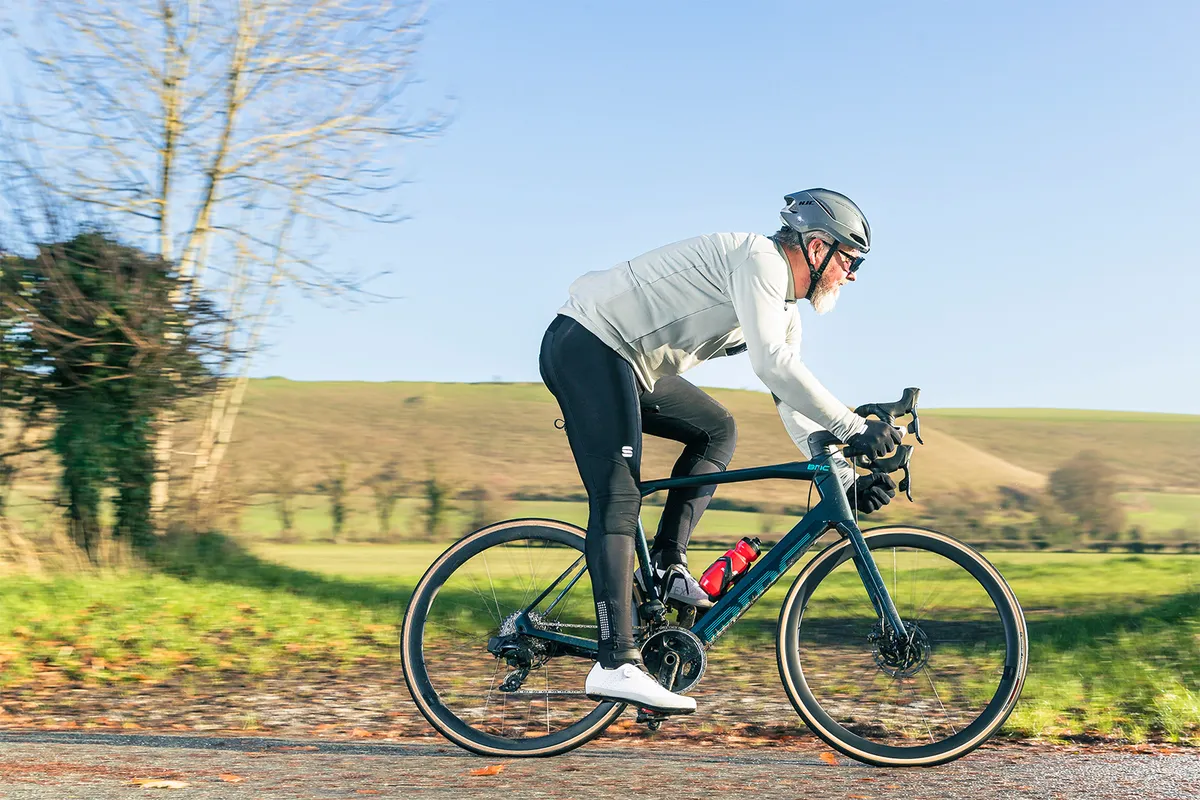
- £7,600/€7,999 as tested
- Pros: Clever assistance; smooth ride; impressive range
- Cons: Tyres not ideal for winter
Our tester judged the BMC Roadmachine AMP One "simply one of the best e-road bikes available".
Its geometry and silhouette closely match those of its non-assisted sibling.
However, it packs in a Mahle X20 motor and a 350Wh battery for an impressively lengthy range aided by clever assistance management.
The handling is well balanced and The SRAM Force AXS groupset shifts with precision. Braking is excellent too.
The Vittoria Rubino tyres gripped and rolled well on dry roads, but wouldn't be the best choice for more hostile winter conditions.
Bianchi Aria E-Road
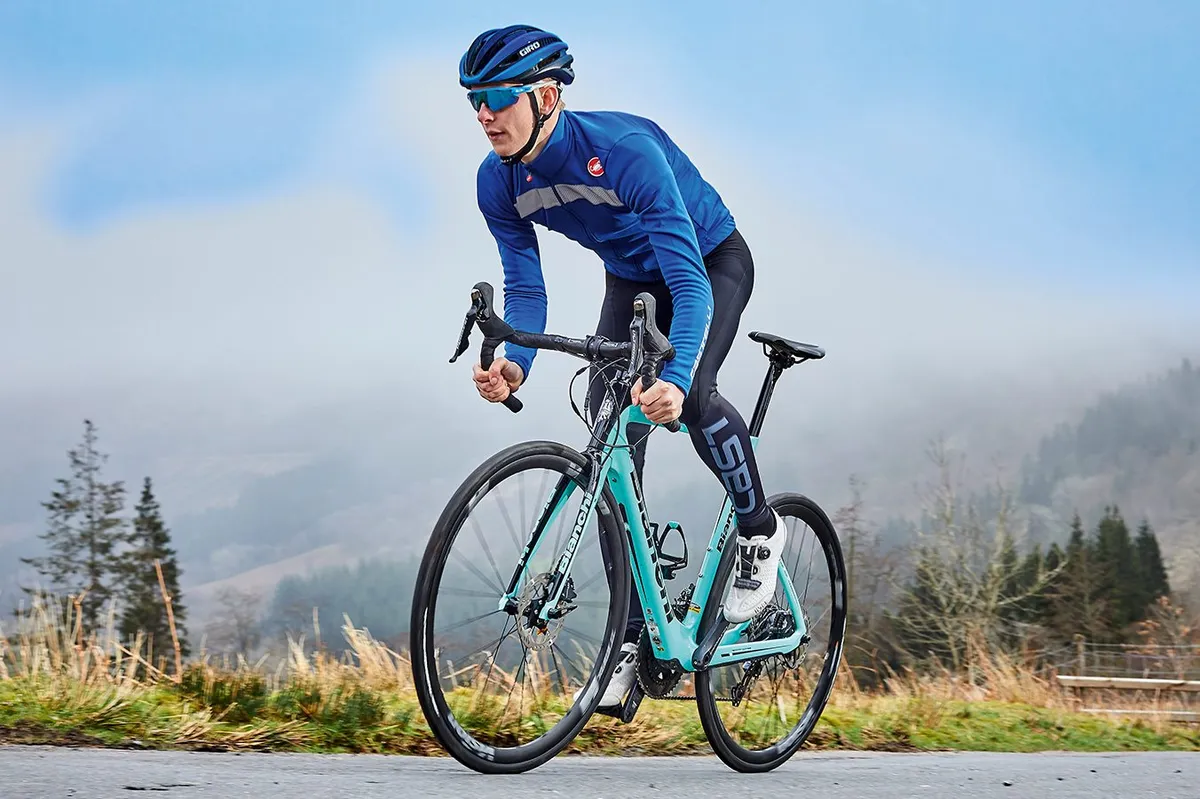
- £4,500/$6,500 as tested
- Pros: Stealthy assistance; great handling; sleek looks
- Cons: The price
The motor-equipped Bianchi Aria E-Road aero bike is blessed with the same great handling offered by its unassisted sister bike, the Bianchi Aria.
The Aria E-Road also uses an ebikemotion motor unit at its rear hub, while the 250W/h battery that powers it is concealed within the frame’s down tube. This makes for a road bike that appears unassisted, at least to the untrained eye.
Despite its appetite for speed, the Aria isn’t a bone shaker on rougher surfaces, thanks to its 28mm tyres.
The best compliment we can pay the Aria is it would work well as a non-assisted bike – it just happens to have a 250-watt boost on tap.
Bianchi Impulso E-road

- £4,400 as tested
- Pros: Ideal for those who aren’t as fit or flexible; punchy motor with impressive range; mudguard and rack mounts
- Cons: Looks are left wanting
Unlike the racier Bianchi Aria E-Road, the Impulso electric road bike isn’t as much of a looker, but we were still very impressed with the ride.
More relaxed geometry and a higher front end make it a good choice if you’re a rider who is less flexible, recovering from injury or looking to keep up with fitter riders.
The Polini bottom-bracket mounted motor system of the Impulso was another pleasant surprise, with plenty of power and an impressive real-world range.
Mounts for mudguards and racks mean this one will also make a great commuter bike.
Cannondale SuperSix Evo Neo 2
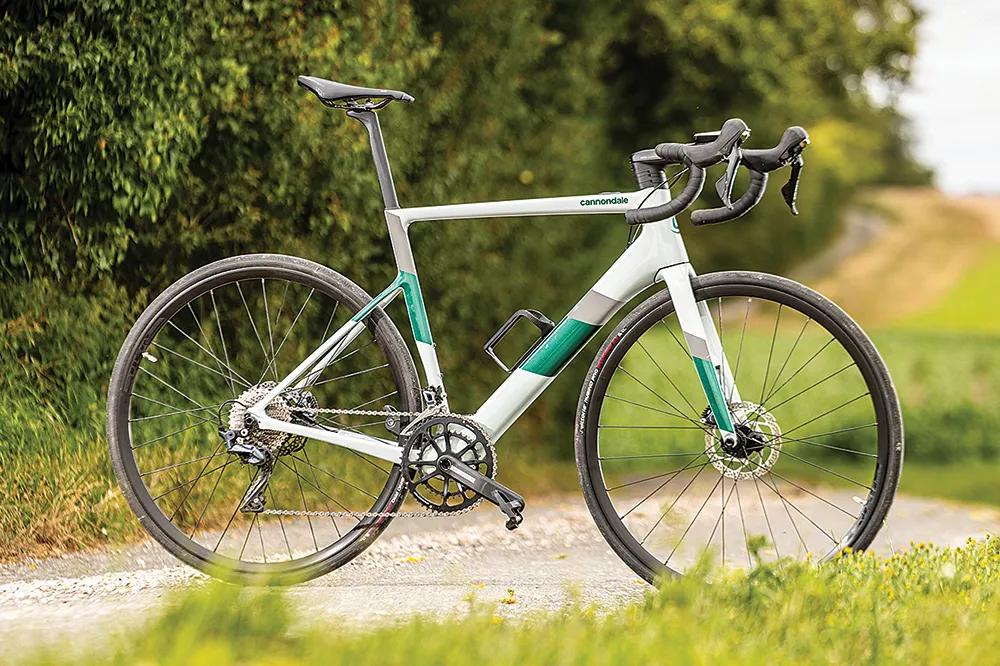
- £5,000/$6,500 as tested
- Pros: Great ride feel; impressive range
- Cons: Tyres
Another ebike that uses the Mahle ebikemotion rear-hub motor, the Cannondale SuperSix Evo Neo is based on our 2020 (non-assisted) Bike of the Year, the SuperSix EVO.
It's inherited both that bike's looks and its race-bike ride quality and responsiveness. There's a long reach and low stack, as well as short chainstays for a performance ride feel.
Quality finishing kit includes Cannondale's aero bar and stem, a Prologo saddle on a carbon seatpost, and Cannondale RDe alloy wheels, for a bike weight of 12.1kg in size large.
We managed 122km with 1,124m of climbing elevation on a single charge, comfortably beating the 75km claimed range. Above all, we were impressed by how well the motor worked with us, rather than dominating the ride.
Focus Paralane² 9.7
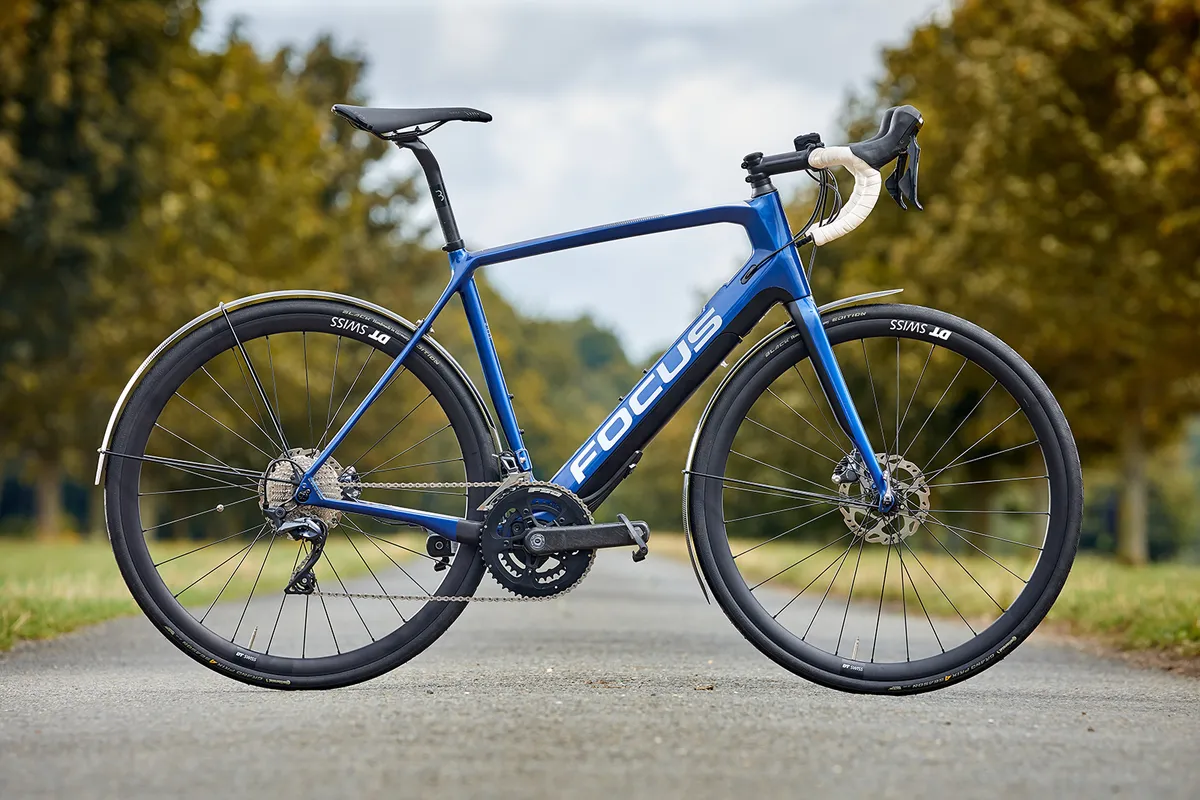
- £4,999 as tested
- Pros: Modular Fazua motor can be removed; clearances for large tyres
- Cons: Controller is clunky
The Focus Paralane² was born out of the prototype Project Y electric bike, and makes use of a removable Fazua motor. This minimal motor/battery system weighs only 3.5kg.
Remove the Fazua system and attach the included cover and the Paralane² effectively becomes a standard road bike, with minimal resistance from the gearbox buried in the bottom bracket. Without the motor, it weighs around 11kg.
The USP for the Paralane² is that the motor is designed to work in tandem with you. The result is unobtrusive power delivery with a feel that puts you in control rather than letting the bike take over.
We’d rather see tyres larger than the 28mm specced as standard, particularly seeing as this frame can accept 35mm tyres without issue, making it a great option for year-round riding or dabbling in light gravel.
Specialized S-Works Turbo Creo SL
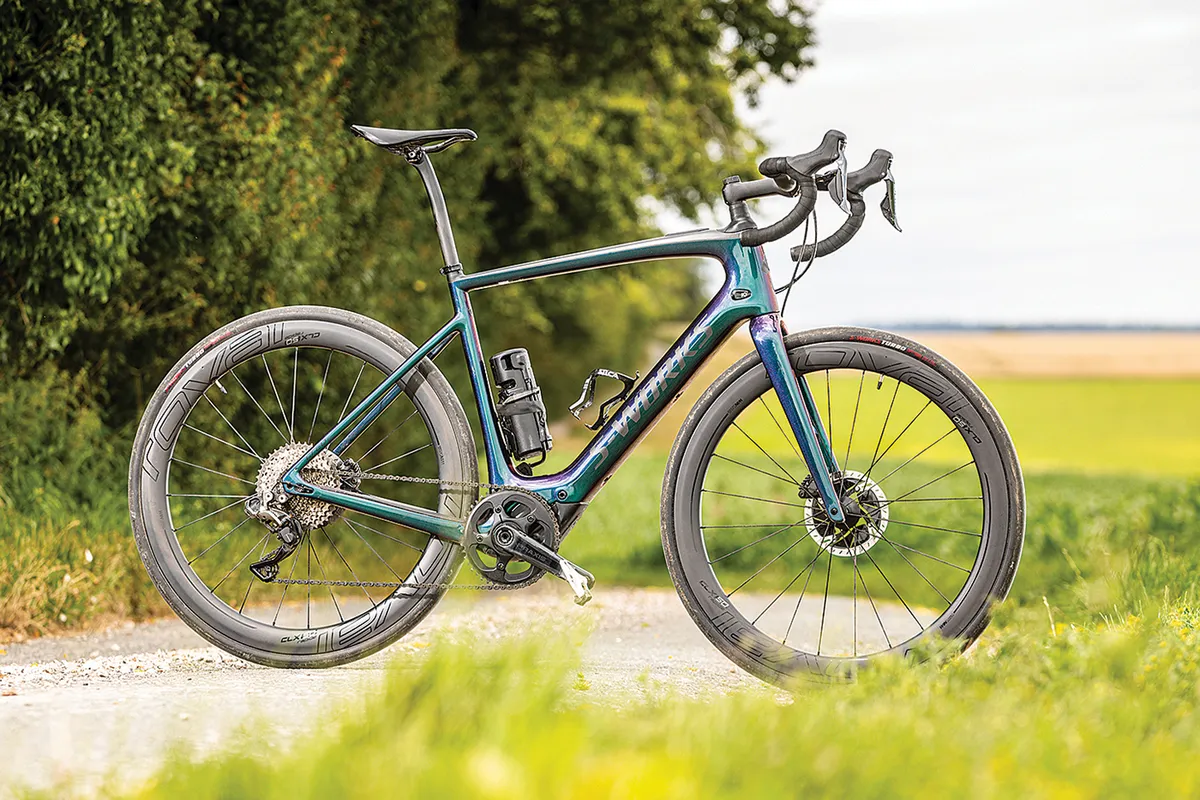
- £10,999/€12,499/$13,500/AU$19,000 as tested
- Pros: High spec; smooth, nimble ride
- Cons: Motor noise
You're paying a superbike price for the Specialized S-Works Turbo Creo SL, one of the most expensive electric bikes available. But the high-spec frame and top-drawer specification, including Roval CLX50 aero carbon wheels, Dura-Ace Di2 shifting and a built-in power meter, help justify the outlay.
Ride quality feels like the Roubaix endurance bike and the Turbo Creo SL even comes with the FutureShock 2.0 headset damper fitted to that bike. The motor weight sits low down to ensure stability and it's nimble despite its 13.7kg weight.
The claimed 130km range from the internal battery is increased to 195km with the included range extender, although we didn't quite match these figures.
Trek Domane SLR 6
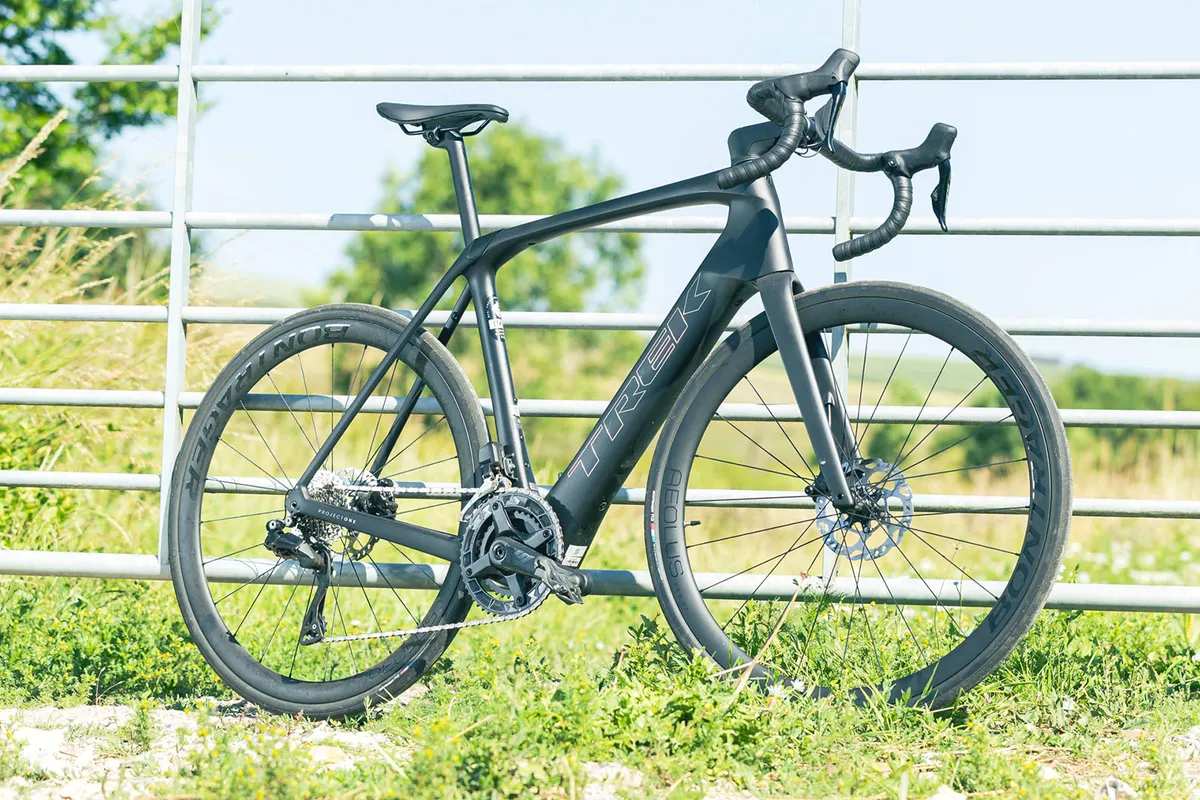
- £8,400/$9,000 as tested
- Pros: Powerful motor, stable; fast charging
- Cons: Remote control brackets slip
The Trek Domane SLR 6 is a comfortable and smooth ebike with great handling and a powerful but quiet TQ motor.
On the road, the bike rides very similarly to the non-assisted Domane with the IsoSpeed rear end soaking up bumps and the low-down weight of the motor helping with fast, twisting descents.
The battery consistently provided enough juice for distances around 100km. The charge time of the TQ system took only 2 hours and 10 minutes to fully charge.
There are control switches for the motor on the inside of the hoods, but unfortunately, these slipped in testing.
Wilier Filante SLR Hybrid

- £11,800/€12,300 as tested
- Pros: Lightweight; sporty; range
- Cons: Expensive compared to competition
Weighing 10.47kg in a size XL, the Wilier Filante SLR Hybrid is one of the lightest e-road bikes ever, making it feel more like a high-performance endurance road bike than an ebike.
It's easy to ride the bike with the Mahle X20 turned off, but turn it on and you'll speed up hills in a way that doesn't feel unlike a non-assisted bike.
The range of the motor system is decent, too, with our tester racking up 113.4 miles/182.5km with 5,085ft/1,550m in one ride.
While the Filante Hybrid SLR is a brilliant example of the next generation of electric road bikes, the price is exceptionally high, putting it out of sight of most riders.
Buyer's guide to electric road bikes
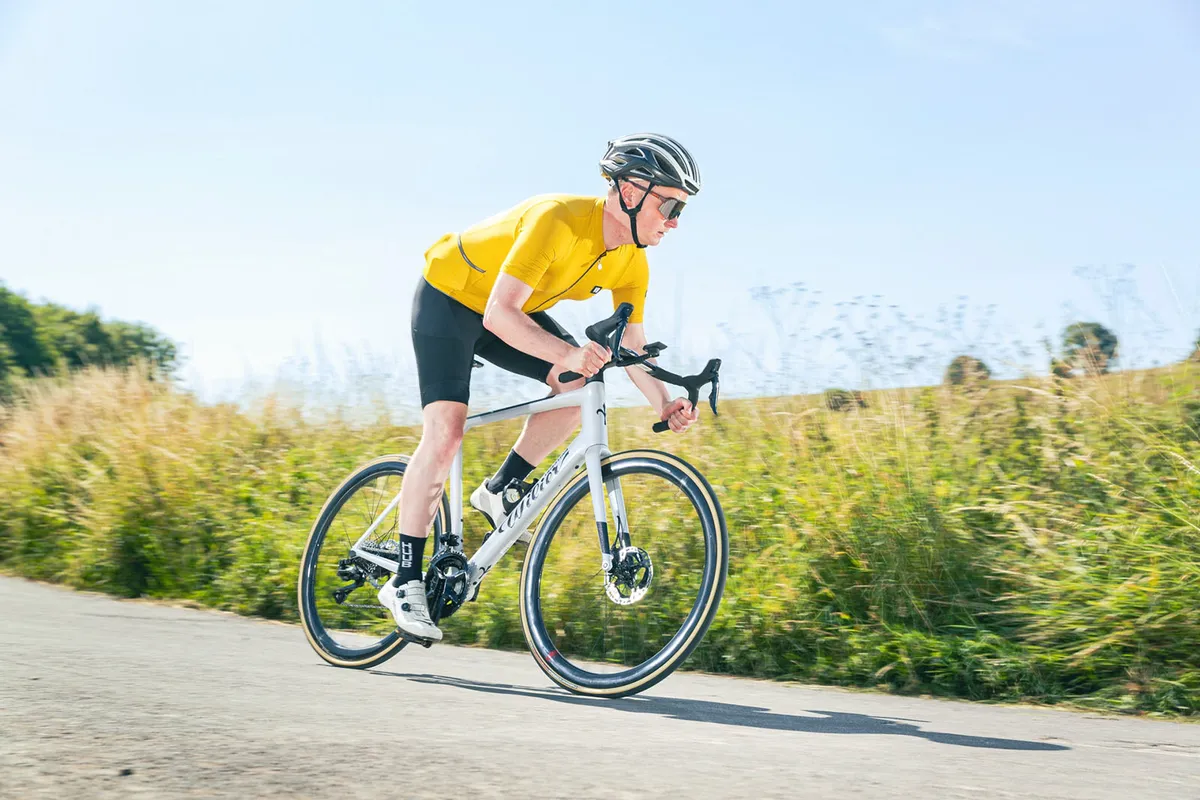
E-road bikes share much in common with their non-assisted counterparts, but there are subtle differences, beyond the addition of a motor
You’ll get the gear range to ride faster and to tackle hills, plus narrower road bike tyres for more rapid progress on the road.
As with any road bike, reducing weight is important, although not usually at the expense of battery capacity and range. Electric road bikes will always be heavier than their conventional counterparts.
A road ebike will have drop handlebars and a more sporty riding position than a hybrid – just like a conventional, non-assisted road or gravel bike.
Electric road bike motors explained
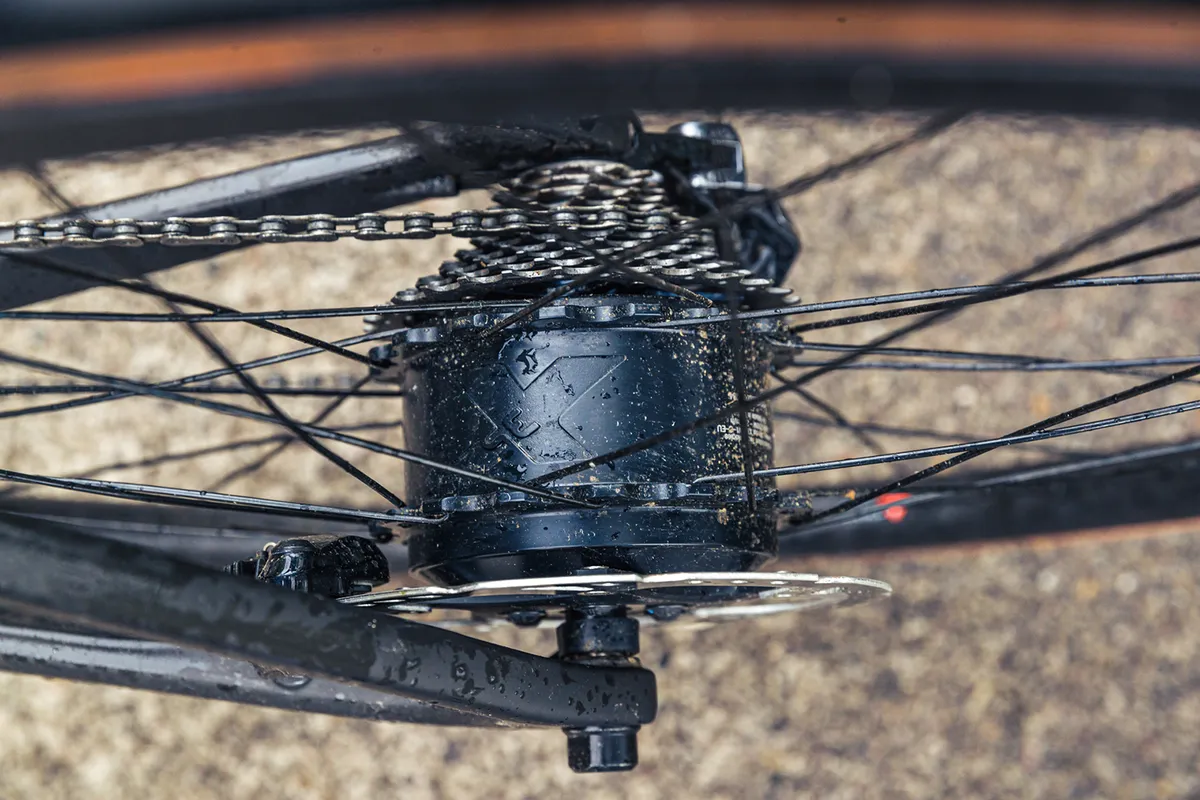
Electric road bike drivetrains are sleeker and more covert than ever, with low-profile batteries often fully enclosed in the bike’s down tube or disguised as a water bottle.
Electric road bike motors tend to be compact and hidden away in the bottom bracket shell or the rear hub – a far cry from the bulky units of old – while controllers are often small, with a tiny button in the front of the top tube being an increasingly popular placement, although you’ll also find bar-mounted controls. That can lead to a bike that at first glance is hard to distinguish from a conventional road bike.
Fazua and ebikemotion motors are a popular choice seen on many e-road bikes thanks to the progressive power delivery well-suited to road riding, although Bosch units and own-brand motors from the likes of Specialized can also cut a minimalist silhouette.
Electric road bike batteries explained

Most electric road bikes have a battery enclosed in the bike’s down tube. Again, that leads to an unobtrusive look. In the case of Fazua, you can drop the battery pack out of the down tube for recharging, or remove it to take it indoors closer to an electric plug. You can even remove it completely and ride the electric bike like a non-assisted road bike.
Other batteries such as ebikemotion’s are more firmly lodged in place, though, so you need to be able to get the bike to a socket to add some juice.
Typical battery capacities are around 250W/h – usually enough for 60km or so of range, although you should be able to get more than that on flatter ground with judicious use.
How much does an electric road bike weigh?
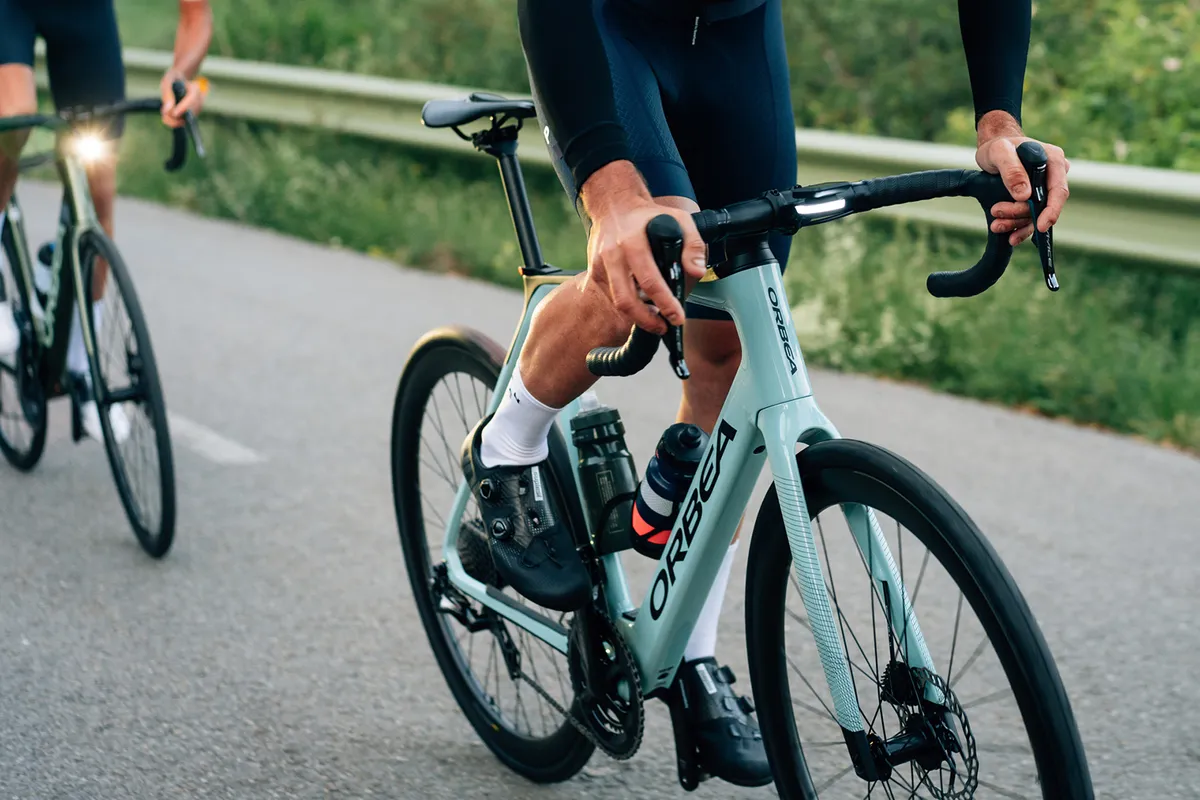
The lightest electric road bikes tip the scales at 12kg or less, which isn’t a lot more than some unpowered bikes. That’s achieved by having a frame and fork made of carbon fibre, often accompanied by carbon-rimmed wheels. That tends to be a pricey menu.
Weight is important, though. On the flat, many road riders will be managing over the 15mph/25kph legal limit (or 20mph in the US) at which the motor cuts out, making the motor and battery a dead weight above those speeds. Keeping the bike’s weight low will make riding without assistance easier, adding to performance and enjoyment.
On the other hand, a more robust, heavier build could be an advantage if you’re aiming to mix in gravel riding. Weight is also less of an issue if you plan to predominantly ride within the legal limit for motor assistance.
Electric road bike wheels and tyres
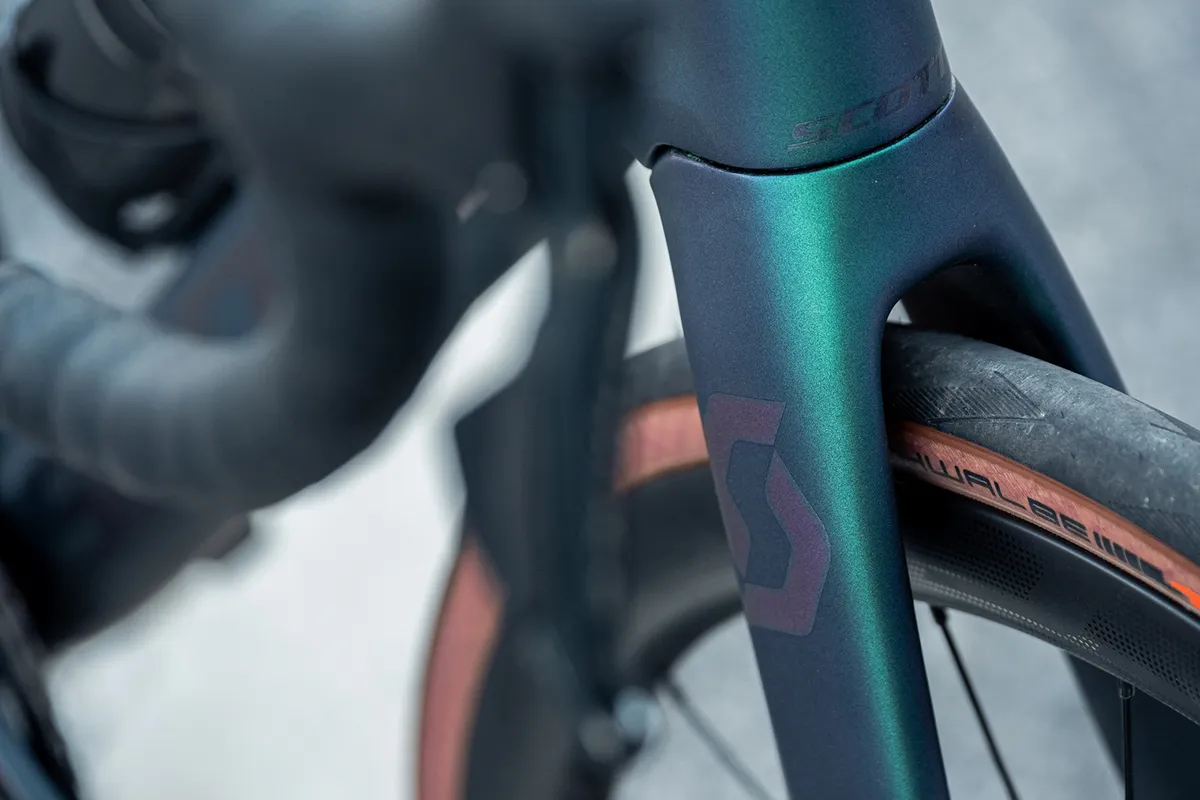
With more power delivered to the road and a heavier bike weight, electric road bikes tend to have wider tyres than standard road bikes. Many pair that with beefed-up wheels with alloy rims, although higher-spec models may come with aero carbon hoops.
Tyre width on electric road bikes tends to start at 28mm. That’s not unusual on a pedal-powered road bike now though, and provides a more comfortable ride, with additional versatility for rough roads or dabbling on light off-road trails.
Can you convert a road bike to an electric road bike?

While less common than, say, an electric hybrid conversion, it is perfectly possible to convert your road bike to an ebike.
Check out our in-depth guide on how to convert a bike to electric power for more info.
